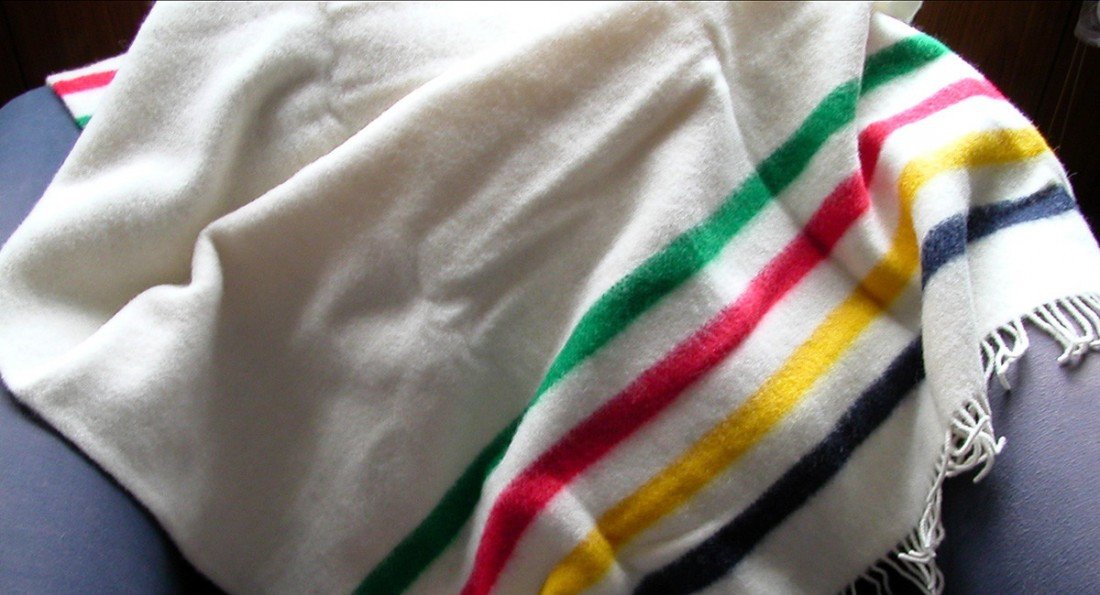The Intersection with Jodie Layne
Those iconic stripes seem to be everywhere recently, especially if you’re on Instagram. Hardly a day goes by that I don’t see someone cozied up with their point blanket or the hashtag #stripespotting under a picture featuring one of the multitude of items bearing the yellow, red, green and blue. And there is a multitude of items comprising the ‘HBC Collection’: $125 flasks, $400 purses and $7,500 canoes among them.
For those of you unfamiliar with the Hudson’s Bay Company (and its blankets), here’s a brief rundown. According to HBC’s website, “two centuries before Confederation a pair of resourceful Frenchmen named Radisson and des Groseilliers discovered a wealth of fur in the interior of the continent”.
They did not, in fact, discover anything – there were plenty of First Nations already quite aware of this ‘wealth of fur’ and using it to create necessities for their own use.
Since the Europeans wanted animal pelts to satisfy their sartorial urges and also had a giant sense of entitlement, they decided they should make the First Nations trade them for stuff they decided was of value. Enter the point blanket: made in France, the “points” are lines on the blanket denoting how much area it covers when unfolded and thus, its value.
In 2009, an HBC blanket cost $475 while a single beaver pelt cost $200, leading us to believe the trappers were grossly underpaid, this alongside a host of other problems facing the colonizers when they came to Turtle Island. Although I was unable to find documented evidence that HBC blankets were used to purposefully spread smallpox (the HBC website charmingly asserts “Killing them [First Nations] off would be detrimental to business”), the visual of a colonial blanket viscerally calls to mind biological warfare in the eighteenth century.
When we view them through that lens, Hudson’s Bay blankets are essentially one of the first forms of currency in early Canada and are a very visual reminder of the lasting effects of the fur trade and ongoing colonialism.
Yet it’s hard not to like the stripes: from everything we were taught, HBC is a part of our identity and heritage and the fur trade was beneficial to everyone involved.
Even I wasn’t immune to the manufactured charm.
Sometimes my desire to fit in and have coveted things does get the best of me – but I can know better and do better. I will not celebrate a system which led to an attack on the way of life of First Nations peoples. That concern should be greater than any need to for a fashion accessory.
In the age of information sharing, Idle No More and Honour the Treaties, we can’t plead ignorance any longer. No matter how much we’d like to pretend our bikinis and tote bags are disconnected from the commoditization of Canada’s natural resources and the exploitation of Aboriginal people, they’re not. Our choices do not exist in a vacuum.
Touting the HBC trademark is one of the ultimate forms of white privilege and erasure of our ongoing colonization of First Nations lands. And it is not just to be unapologetic for the crimes of the past, but those of the present, too.
Jodie Layne is a feminist activist, community development worker and freelance writer based in Winnipeg.
Published in Volume 68, Number 18 of The Uniter (January 29, 2014)







